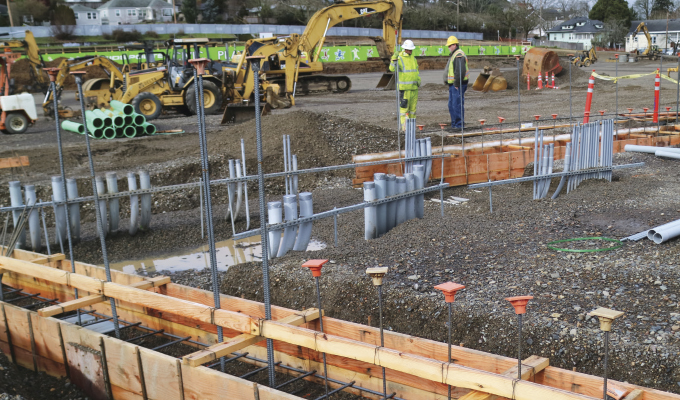How to be competitive in a changing world
By Don Lindsey
Times have changed dramatically since The Great Recession of 2008. The time period from December 2007 through June 2009, which is what many have referred to as a “reset” within the housing market, was extremely challenging to those of us who relied upon this booming industry to provide for our families.
I spoke to a successful home builder in Eugene, Oregon, who told me he had to “use up all his savings” to support his wife and four kids during that difficult time. Whereas another well-known home builder completely lost the family business, which his father started from scratch decades prior and handed it over to his son, only to watch his well-intentioned son lose what had been a firm grip on the family business. Last anyone heard, the son was working at a Home Depot in Portland, Oregon.
BUSINESS PHILOSOPHY
Both contractors were in the same industry but only one business survived. Why? Same industry, same type of business, same focus, but only one found success. I think the same question, of why one business survives and one does not, holds true today and lies mostly within an owner’s business philosophy.
Sure, the Great Recession amplified things considerably, but an unhealthy business is an unhealthy business, and if not being operated properly, recession or not, difficulties and challenges will eventually, and almost always, find their way into a company.
Although the recession “officially” ended 10 years ago, the wounds left behind can be recalled quickly as business owners emerged to an entirely different business climate. Prior to the recession, a person would have to look back 50 or more years to find a time in history that changed the business landscape as much as the first decade in 2000. Those who emerged from the ashes found that consumer behavior was different. Consumers were much savvier; they seemed to hold onto their discretionary income much firmer; information was power; and they knew how to get it. In many cases, consumers knew more about what the contractors were doing than the contractors themselves, and loyalty was no longer as important as it once was.
THE BIG THREE
Back in the old days of construction, as one old-timer told me, we could get “two of the big three.” He elaborated, “Every business owner whether they are manufacturing equipment or building dog houses operated on a system based on time, money, and quality. For many years, we could get two of the three. If a customer wanted it fast and cheap, the quality wasn’t going to be great. However, if they wanted it cheap and of good quality, it was going to take a while to get. If they wanted it quick and of good quality, it was going to cost them. This was the premise most everyone built their businesses upon over the past several decades. However, after 2008, consumers emerged demanding all three! Consumers were no longer willing to ‘give’ on quality, time, or cost; they emerged demanding high quality, a competitive price (if not the cheapest), and they wanted it when they wanted it. If a company could not deliver, they just went to the next company and propositioned them with the same deal. Eventually, someone would agree and it didn’t take long for this to become the new standard.”
CONSUMER MINDESET
Today, this philosophy is prevalent throughout most all industries, and quality is a given. Most companies operating in business today could not survive offering anything less than the highest level of quality. With the quality aspect being equal, consumers now seem to be making most decisions based on how cheap and how quickly they can get what they want … the old saying,“have it your way,” has truly become the consumers’ mindset, and continues to challenge the most business savvy contactors.
So, how does a contractor, or any business for that matter, provide excellent quality while providing a particular product or service competitively and profitably within the timeframe required? This seems to be the ongoing challenge and what most folks are struggling with today.
However, there are some companies not only having success but thriving because of a conscious decision to break from tradition and approach their business differently. Change can be scary, but change can also bring an opportunity that others are completely missing.
CHANGING IT UP
Danny Johnson, president of Rock Chuckers, in Salt Lake City, Utah, is a good example of an opportunity brought forth by change. Danny came into the industry 20 years ago and saw there were a number of inefficiencies within the construction industry. One particular area that caught his attention was how material was being hauled, staged, and placed at jobsites, and one that he self-admitted would also challenge his own conventional way of looking at the industry.
Danny learned over the years that clients are turned off by a company’s lack of performance and quality over pricing. Although the price must be competitive, the value proposition differs from one consumer to the next, and this is why he came up with the motto: When You Want It Done Right the First Time.
CLOSING THOUGHT
When I read Danny’s rallying cry for the first time, it reminded me of a statement my father once told me. My daddy was a southern boy who was transplanted here in the West and he said to me one day, “Son, if you had time to do it twice, you had time to do it right the first time.” Danny at Rock Chuckers subscribes to this same way of thinking. His value proposition is: There are many others doing what we do, but very few do it right the first time!
About the author
Don Lindsey is the director of sales and marketing for Conveyor Application Systems.
Modern Contractor Solutions, December 2019
Did you enjoy this article?
Subscribe to the FREE Digital Edition of Modern Contractor Solutions magazine.



